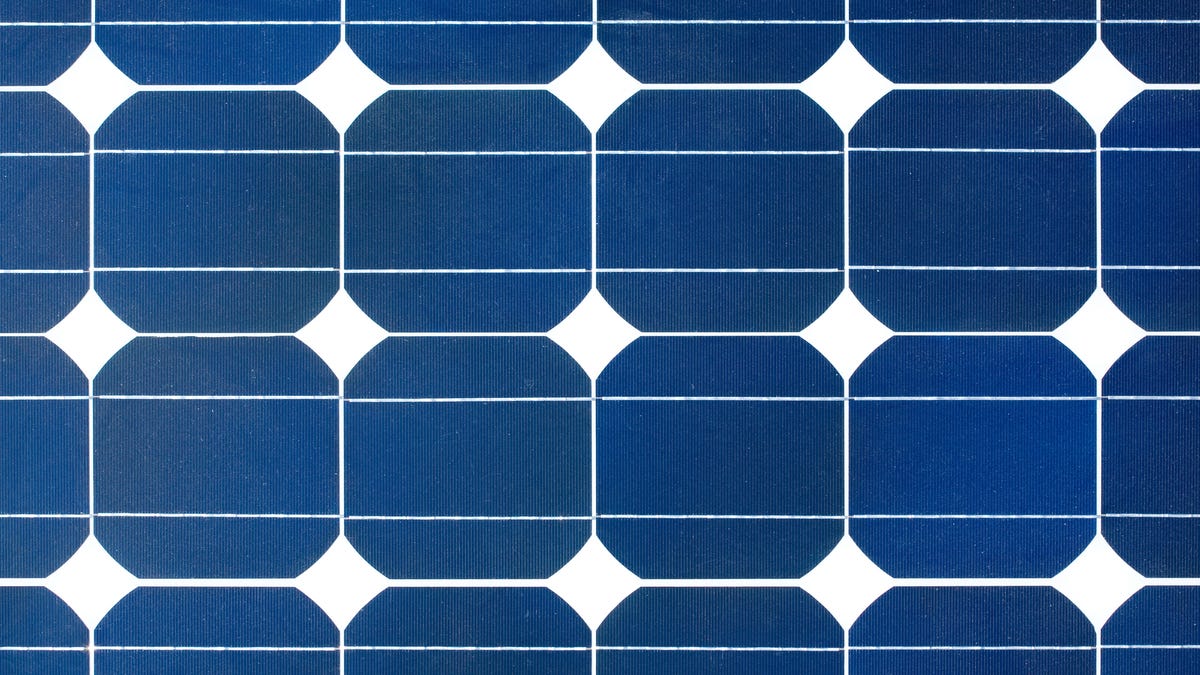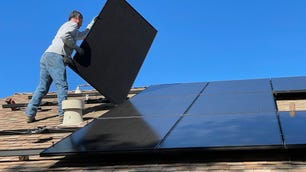
You’ve probably wondered what kind of magic in solar panels converts sunlight into electricity.
It’s not magic. It’s science. Specifically, it’s the photovoltaic effect. This phenomenon relies on the interaction between sunlight and the semiconductive materials in the solar cells to create electricity.
As inflation continues eroding the dollar’s value, harnessing sunlight and converting it to electricity becomes increasingly compelling. Installing solar panels can relieve your family financially and help you contribute to a more sustainable future.
Can solar panels save you money?
Interested in understanding the impact solar can have on your home? Enter some basic information below, and we’ll instantly provide a free estimate of your energy savings.
But how does that sunlight become electricity? Here’s a look at what’s inside a solar panel and how this equipment gets the energy of daylight into your appliances.
What are the components of a solar panel?
Solar panels are the key part of any solar energy system. They capture the energy of the sun and turn it into usable electricity. Here’s a list of all the parts of a solar panel.
- Solar cells: These, made of silicon, convert sunlight into electrical energy.
- Backsheet, encapsulation and frame: An insulating backsheet, a glass or polymer encapsulation and a metal frame hold the solar cells together and protect them from the elements.
- Junction box: The junction box protects diodes, wiring connections and other electrical components.
- Connectors: MC4 connectors are commonly used to connect solar panels together as well as to other components of your solar panel system.
Beyond the panels themselves, other components connect the panels to the rest of your home electrical system.
- Inverter: The inverter is a critical component of a solar energy system. Solar panels and batteries generate direct current, or DC, electricity, while household appliances and outlets operate on alternating current, or AC. The inverter transforms the direct current electricity from solar panels and batteries into alternating electricity for use with home appliances.
- DC optimizers and string inverters: DC optimizers allow each panel to operate independently and run maximum power point tracking, or MPPT, on each panel. The optimized power is then fed to a compatible string inverter for inversion to AC power.
- Microinverters: These devices allow each panel to operate independently, track maximum power point, and invert DC to AC directly on the panel, eliminating the need for a central inverter.
- Rapid shutdown device: This device ensures a safe shutdown of the solar panel system.
- Telemetry hub: This monitors and communicates system performance data.
- Battery: A battery, which is not required for a grid-tied solar panel system, stores electricity and allows it to be used later. Batteries are needed for off-grid systems and if you want your solar panels to power your home during a power outage.
How does solar energy power your home?
Solar enthusiasts should understand two closely related phenomena — the photoelectric effect and the photovoltaic effect — to grasp how solar panels generate electricity, Rohit Kalyanpur, CEO of the Silicon Valley-based solar company Optivolt, told CNET.
The photoelectric effect occurs when certain materials are exposed to a specific light spectrum and absorb photons from sunlight. Upon absorption, these photons can excite or energize the electrons within the material, causing them to escape their atomic bonds. As these electrons move, they generate voltage and current.
The photovoltaic effect is very similar to the photoelectric effect, but it takes the process a step further, Kalyanpur said. In the photovoltaic effect, photons from the sunlight are absorbed by a solar cell. Those photons energize the electrons within the solar cell material, causing them to escape their atomic bonds and become free. Solar cells have a PN junction composed of semiconductor materials, which directs the flow of free electrons, generating electricity.
Do solar panels mean my house is off-grid?
Having a solar panel installation does not necessarily mean your house is off-grid. An off-grid solar system is a self-contained energy system that independently produces and stores electricity.
Off-grid systems use solar panels to generate electricity and transfer it to a battery for storage. When you need electricity to run an appliance, an inverter converts the energy stored in the battery to AC electricity for power.
Grid-tied systems, on the other hand, don’t stand alone. They are connected to the utility grid. They might transmit excess energy generated by the solar panels back to the electric grid, often selling it back through net metering for credits on your power bill. The primary advantage of grid-tied systems is they are significantly cheaper because you don’t need to buy expensive batteries to add to the system.
If you’re buying a solar panel system for an off-grid location, you’re also going to need batteries.
What other ways can I use solar energy?
You can use solar energy in several ways without fully committing to expensive electricity-generating solar installation in your home. Here are a few alternative use cases for solar energy.
Solar water heaters: A replacement for your gas or electric water heater, solar water heaters use solar energy to heat water for household use. They can help you save money and reduce energy consumption associated with any activity requiring hot water.
Solar tubes: Also known as sun tunnels or tubular skylights, solar tubes can be used to bring natural light into dimly lit areas of a home.
Solar outdoor lighting: Solar-powered lights are a popular way to illuminate outdoor spaces such as walkways, gardens and patios. They use small solar panels to charge batteries during the day, providing light at night.
Solar pool heaters: Solar pool heaters use solar collectors to heat the water in swimming pools. They are an eco-friendly way to extend the swimming season.
Solar cookers: Solar cookers use the sun’s energy to cook food without gas or electricity. They are great for outdoor cooking, camping, emergencies and areas where it’s difficult to access electricity or cooking gas.
Solar pumps: Solar water pumps use solar energy to pump water for irrigation, livestock and remote areas without access to the electrical grid.
Solar attic fans: These fans use solar energy to power a ventilation system that regulates the temperature in the attic. These solar fans lower electricity bills by reducing the need for air conditioning.
Solar chargers: Portable solar chargers allow users to charge their devices with solar energy. They are great for outdoor activities, camping, areas with limited access to the power grid and emergency preparedness.

